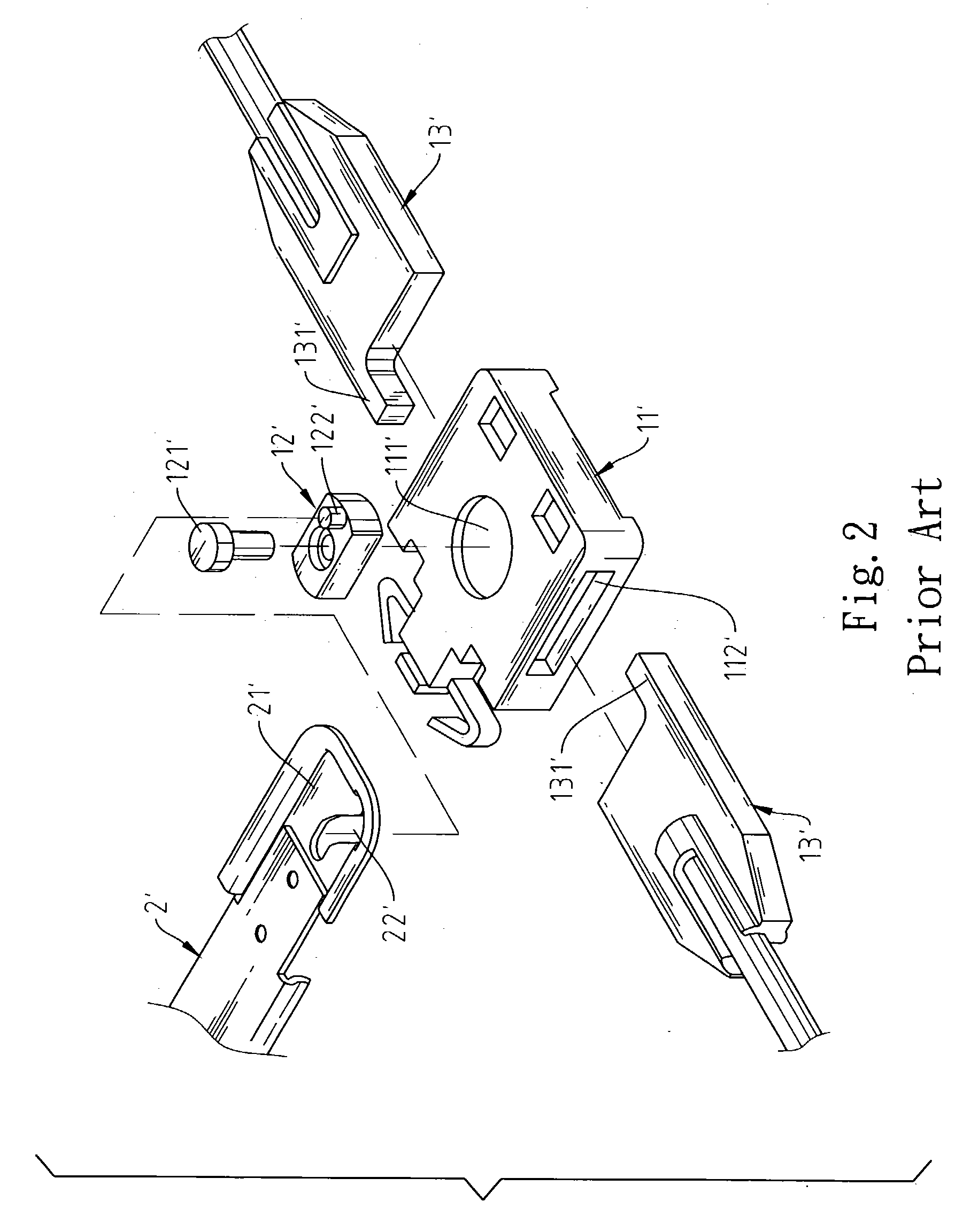Drawer interlocking mechanism
- Summary
- Abstract
- Description
- Claims
- Application Information
AI Technical Summary
Benefits of technology
Problems solved by technology
Method used
Image
Examples
Embodiment Construction
[0018] Please refer to FIG. 6 to FIG. 11. The invention provides an improved drawer interlocking mechanism 1 that mainly consists of a base 11, an axle cam 12 and two sets of brakes 13.
[0019] The base 11 is fixed to one end of the rail 3. There is a penetrating axle hole 111 in the base 11 and a slot 112 on the side of the base 11. At the corresponding position on the rail 3 to the slot 112, there is a corresponding slot 31 with same openness. Along the peripheral of the axle hole 111, there are several curved holes 113 every 90 degrees. At the bottom, there is a ladder surface 114. Besides, on the two sides of the slot 112, which are symmetrical to the central line of the axle hole 111, there are sticking convex points 115.
[0020] The axle cam 12 has a sticking gradient edge surface 121 on outer edge for the slot 112 to place into the above-mentioned axle hole 111 of the base 11 and match the ladder surface 114. Thus, one side of the axle cam 12 can be blocked by the rail 3. The o...
PUM
 Login to View More
Login to View More Abstract
Description
Claims
Application Information
 Login to View More
Login to View More - R&D
- Intellectual Property
- Life Sciences
- Materials
- Tech Scout
- Unparalleled Data Quality
- Higher Quality Content
- 60% Fewer Hallucinations
Browse by: Latest US Patents, China's latest patents, Technical Efficacy Thesaurus, Application Domain, Technology Topic, Popular Technical Reports.
© 2025 PatSnap. All rights reserved.Legal|Privacy policy|Modern Slavery Act Transparency Statement|Sitemap|About US| Contact US: help@patsnap.com



